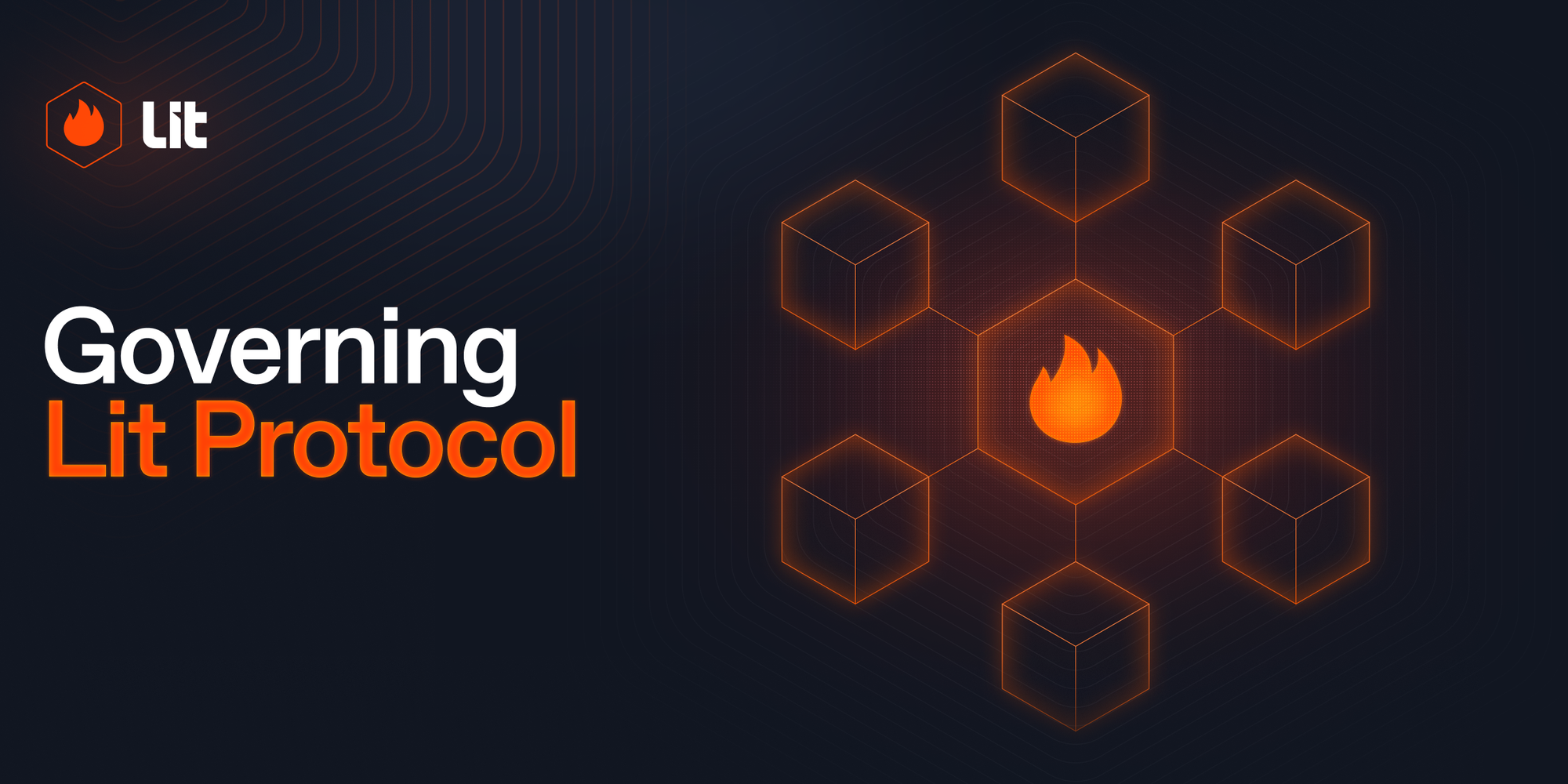Introducing the Lit Association and Onchain Governance

As Lit Protocol approaches its Token Generation Event (TGE) and the transition to V1 mainnet, one foundational element must be established first: a transparent and accountable governance system that represents those building, securing, and participating in the network.
Today, we are formally introducing the Lit Association, a non-profit Swiss Association (CHE-498.007.045) and governance framework.
The initial phase of protocol governance is designed to:
- Establish clear processes for protocol upgrades and policy decisions
- Provide structure for validator onboarding and operator accountability
- Define how resources and incentives are allocated across the ecosystem
- Create channels through which community members can formally propose and influence changes
During this phase, the Lit Association will serve as a steward of the network, driven by its non-profit charter to provide secure, decentralized autonomy while working in collaboration with the core development company, node operators, integration partners, and token holders to meet that goal.
The governance of Lit Protocol is intentionally rolled out in phases. The first phase establishes stability and accountability ahead of mainnet while leaving room for open iteration. Several components of the governance model — including proposal lifecycles, validator selection models, and resource distribution — are expected to evolve over time. Builder, node operator, and token holder feedback plays a direct role in shaping those refinements.
Governance Architecture
Lit Protocol’s governance model oversees four primary domains:
Protocol Upgrades
Protocol upgrades include performance improvements, cryptographic enhancements, SDK changes, and security patches.
- Proposed upgrades are posted in the governance forum for public review.
- After sufficient discussion, they advance to formal approval.
- During the initial governance phase, upgrades are ratified by the Lit Association, operating via a multisig structure.
- Once approved, updates are distributed to node operators for execution.
This structure ensures that no single team unilaterally ships changes, while still allowing upgrades to be implemented efficiently.
Node Operations and Validator Participation
Lit Protocol genesis node operators are selected via the staking contest, where members of the community can openly participate in selecting these parties.
New node operators will be approved, onboarded, and rotated on a quarterly basis, or sooner in the event of major network expansion (e.g. the launch of new Realms to scale the network).
To learn more about node operations, please reference the node operator docs.
Ecosystem Funding and Resource Allocation
A sustainable network requires aligned economic incentives. After the launch of the v1 mainnet, resource allocation will be handled through the veLITKEY model, introduced in LIP-001. The veLITKEY mechanism seeks to permanently align LITKEY token issuance with network productivity and revenue generation. The model transitions Lit Protocol into a self-sustaining, revenue-backed economy governed by stakeholders.
Metagovernance and Future Evolution
As the network and governance processes evolve, mechanisms for decision-making, funding, upgrades, and node coordination will require ongoing refinement. This function—metagovernance—encompasses the rules and structures that govern the governance system itself. Metagovernance includes:
- Adjusting quorum or voting thresholds
- Creating or deprecating working groups
- Modifying proposal flows or funding mechanisms
- Delegating additional responsibilities to the community over time
Changes to any of these governance-level systems may be proposed through the Lit Improvement Proposal (LIP) process here.
How to Participate
Lit Protocol governance is open to anyone who wants to contribute.
Whether you are a developer, researcher, ecosystem user, or simply someone who believes in decentralized infrastructure, you can participate immediately by following the process outlined in the governance documentation.
Here’s how to get involved:
- Join the governance forum and read through active discussions.
- Share feedback on proposal ideas or start one of your own.
- Ask questions or suggest improvements to how governance itself should evolve.
- Track the first LIPs as they move through the pipeline and voice support or concerns where relevant.
This governance model is being built in public, and your input matters.. If something can be improved, clarified, or questioned, we want to hear it. Start here.
Closing
With the TGE ahead and the launch of Lit v1 on the horizon, the network is entering a new phase. Control over Lit Protocol’s signing, encryption, and automation layer increasingly belongs to the teams and people who rely on it: the ones building with it, securing it, and testing its limits in production.
The next chapter of Lit Protocol will be written in public.
If you care about how the network evolves, how validators are selected, how incentives are allocated, and how new features are prioritized, now is the time to take part.
